1. Introduction
In the world of metal fabrication, precision and efficiency are crucial. Steel profile roll forming machines have revolutionized the way steel profiles are manufactured, offering a cost-effective and streamlined process for creating custom-shaped metal profiles. This article explores the inner workings of these machines, their advantages, applications, and emerging trends in the industry.
2. What is a Steel Profile Roll Forming Machine?
A steel profile roll forming machine is an automated manufacturing equipment used to bend, shape, and cut metal coils into various profiles with consistent cross-sections. The process involves passing a continuous strip of steel through a series of roll stations, each contributing to shaping the profile.
3. How Does a Steel Profile Roll Forming Machine Work?
The machine’s main components include decoilers, leveling units, roll stations, and cutting systems. The steel coil is fed into the machine and guided through the leveling unit to ensure a flat and consistent material input. It then enters the roll stations, where each set of rollers progressively shapes the steel until the desired profile is achieved. Finally, the cut-off system trims the profile to the desired length.
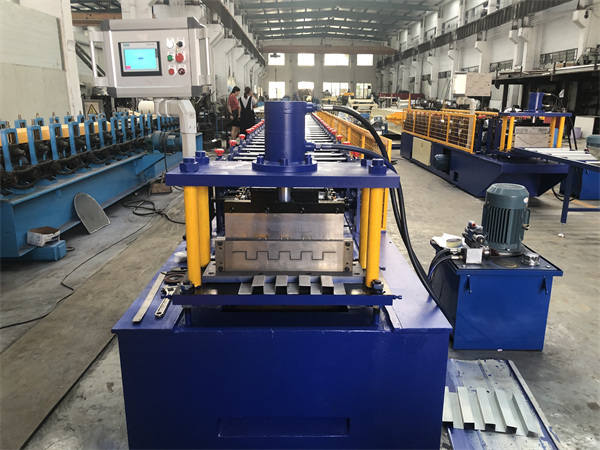
4. Advantages of Using Steel Profile Roll Forming Machines
4.1 Cost-Effectiveness
Roll forming significantly reduces material waste compared to traditional metal fabrication methods. With precise forming and minimal scrap generation, the overall production cost is reduced.
4.2 Versatility and Customization
Steel profile roll forming machines can produce a wide range of profiles, from simple C-channels to complex custom shapes, catering to diverse industry needs.
4.3 High Production Rates
The continuous and automated process allows for high production rates, making roll forming ideal for large volume manufacturing.
4.4 Consistency and Precision
Roll forming ensures consistent dimensions and shapes, providing uniformity in the final products, which is crucial for various applications.
5. Types of Steel Profiles Produced by Roll Forming Machines
5.1 C-Channels
C-channels, also known as C-sections, are widely used in the construction industry for framing applications.
5.2 U-Channels
U-channels have a shape similar to the letter “U” and are commonly used as structural components and edge protectors.
5.3 Z-Shapes
Z-shaped profiles are used for lightweight structural applications and are commonly found in the automotive and aerospace industries.
5.4 Hat Channels
Hat channels, also known as furring channels, are often used to support drywall in construction.
5.5 Custom Profiles
Roll forming machines can produce custom profiles tailored to specific project requirements.
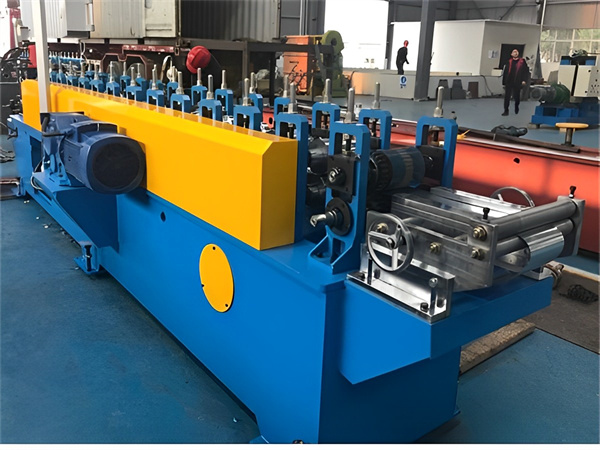
6. Factors to Consider When Choosing a Steel Profile Roll Forming Machine
6.1 Material Compatibility
Before investing in a steel profile roll forming machine, it is essential to consider the type and thickness of materials the machine can handle. Different machines are designed to process specific materials, such as steel, aluminum, or copper. Ensuring compatibility with your desired material ensures optimal performance and product quality.
6.2 Profile Complexity and Size
The complexity and size of the profiles you intend to manufacture play a crucial role in selecting the right roll forming machine. Some machines are better suited for simpler profiles, while others excel at forming intricate and large-sized profiles.
6.3 Machine Speed and Efficiency
Productivity is a key consideration for any manufacturing process. Evaluate the machine’s speed and efficiency to ensure it meets your production requirements. High-speed machines are ideal for large production volumes, while slower machines may be sufficient for smaller batches or custom orders.
6.4 Tooling and Changeover Time
Roll forming machines require tooling sets specific to each profile. Consider the ease and cost of tooling changeovers when switching between different profiles. Minimizing changeover time can significantly improve production efficiency.
6.5 Machine Manufacturer Reputation
Selecting a reputable and experienced manufacturer is crucial for acquiring a high-quality roll forming machine. Research the manufacturer’s track record, customer reviews, and after-sales support to make an informed decision.
7. Maintenance and Care of Steel Profile Roll Forming Machines
7.1 Regular Inspection and Lubrication
Perform regular inspections of the machine to identify any wear and tear or potential issues. Lubricate moving parts as recommended by the manufacturer to maintain smooth operation.
7.2 Cleaning and Debris Removal
Keep the machine and work area clean to prevent debris from affecting the forming process. Regularly remove accumulated debris to ensure product quality and extend machine life.
7.3 Tooling Maintenance
Properly maintain the tooling sets by following the manufacturer’s guidelines. Replace worn-out tooling promptly to maintain profile accuracy and prevent damage to the machine.
7.4 Addressing Wear and Tear
Over time, components may wear out due to the continuous operation of the machine. Address any signs of wear and tear promptly to avoid costly breakdowns and production delays.
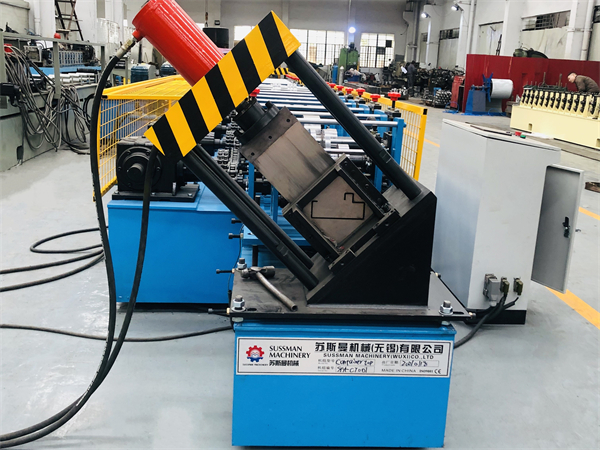
8. Safety Considerations When Operating Steel Profile Roll Forming Machines
8.1 Operator Training and Certification
Ensure that operators receive thorough training on the safe operation of the roll forming machine. Certification programs can further enhance their expertise and reduce the risk of accidents.
8.2 Machine Guards and Safety Features
Implement safety features, such as machine guards and emergency stop buttons, to protect operators from potential hazards during the forming process.
8.3 Proper Material Handling
Train operators in proper material handling techniques to avoid injuries and material damage during loading and unloading processes.
8.4 Emergency Procedures
Establish clear emergency procedures and train all personnel on how to respond to unexpected situations to minimize risks and ensure a safe working environment.
9. Emerging Trends in Steel Profile Roll Forming Technology
9.1 Automation and Industry 4.0 Integration
The integration of automation and Industry 4.0 technologies is revolutionizing roll forming. Smart roll forming machines can optimize production, monitor performance, and provide real-time data for predictive maintenance.
9.2 Advanced Material Handling Systems
Efficient material handling systems, such as robotic loaders and unloaders, are enhancing the overall productivity and safety of roll forming processes.
9.3 Energy Efficiency and Sustainability
The industry is moving towards greener practices with the development of energy-efficient roll forming machines and the adoption of sustainable materials.
10. Applications of Steel Profile Roll Forming Machines
10.1 Construction Industry
Steel profiles are extensively used in construction for structural support, framing, and cladding applications.
10.2 Automotive Sector
The automotive industry relies on roll-formed profiles for components such as roof rails, door frames, and bumpers.
10.3 Aerospace and Aviation
Aircraft manufacturers use roll-formed profiles for lightweight structural components and aerodynamic features.
10.4 Furniture and Appliances
The furniture industry utilizes roll-formed profiles for various products like cabinets, shelving, and appliance parts.
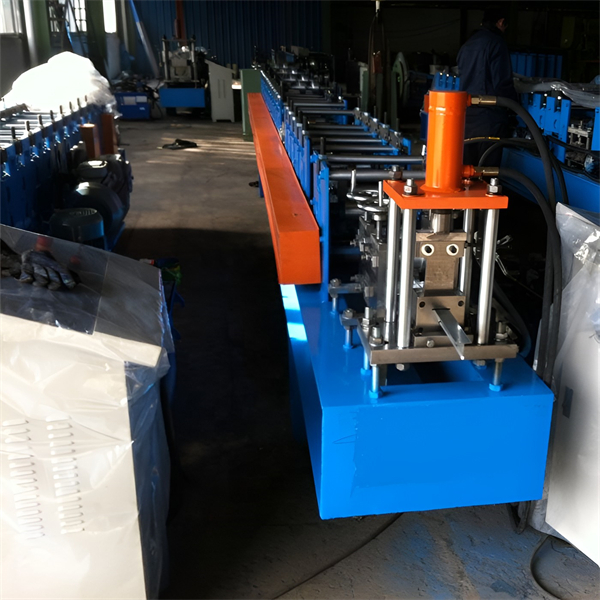
11. Challenges Faced in Steel Profile Roll Forming
11.1 Material Springback
Springback is a common challenge in roll forming, where the material returns to its original shape after forming. Careful tooling design and material selection can help mitigate this issue.
11.2 Forming Complex Shapes
Forming intricate profiles with tight tolerances can be challenging and may require specialized machines and tooling.
11.3 Production Bottlenecks
Identifying and resolving production bottlenecks is essential to maintaining a smooth and efficient manufacturing process.
11.4 Quality Control
Ensuring consistent product quality requires stringent quality control measures throughout the roll forming process.
12. Future Prospects of Steel Profile Roll Forming Machines
The future of steel profile roll forming machines looks promising with ongoing advancements in automation, material sciences, and digitalization. These machines will continue to play a pivotal role in meeting the growing demand for custom-shaped metal profiles across various industries.
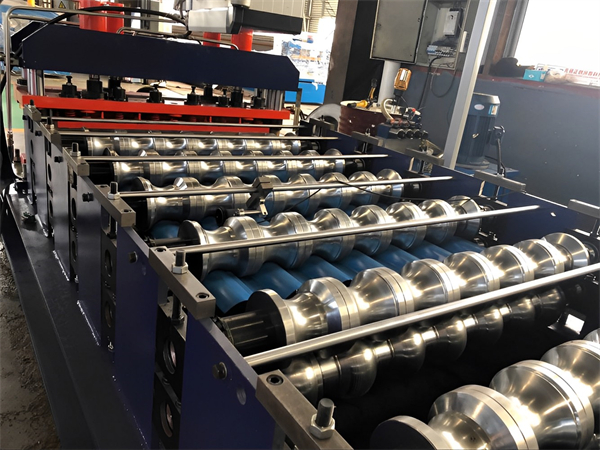
13. Conclusion
Steel profile roll forming machines have significantly transformed the metal shaping industry. Their cost-effectiveness, versatility, and high production rates make them a preferred choice for manufacturing a wide range of steel profiles. As technology advances, these machines will continue to evolve, enhancing productivity, efficiency, and safety in the manufacturing sector.
FAQs
Q: Are steel profile roll forming machines suitable for producing custom-shaped profiles?
A: Yes, steel profile roll forming machines are capable of producing custom-shaped profiles tailored to specific project requirements.
Q: Which industries benefit the most from using steel profile roll forming machines?
A: Steel profile roll forming machines find extensive applications in the construction, automotive, aerospace, and furniture industries.
Q: How can I ensure the safety of operators when operating roll forming machines?
A: Operator training, implementing safety features, and following proper material handling procedures are essential for operator safety.
Q: What are some common challenges faced in steel profile roll forming?
A: Challenges include material springback, forming complex shapes, production bottlenecks, and ensuring consistent quality control.
Q: What does the future hold for steel profile roll forming machines?
A: The future prospects are promising, with ongoing advancements in automation, material sciences, and energy efficiency. These machines will continue to be at the forefront of metal shaping technology.
